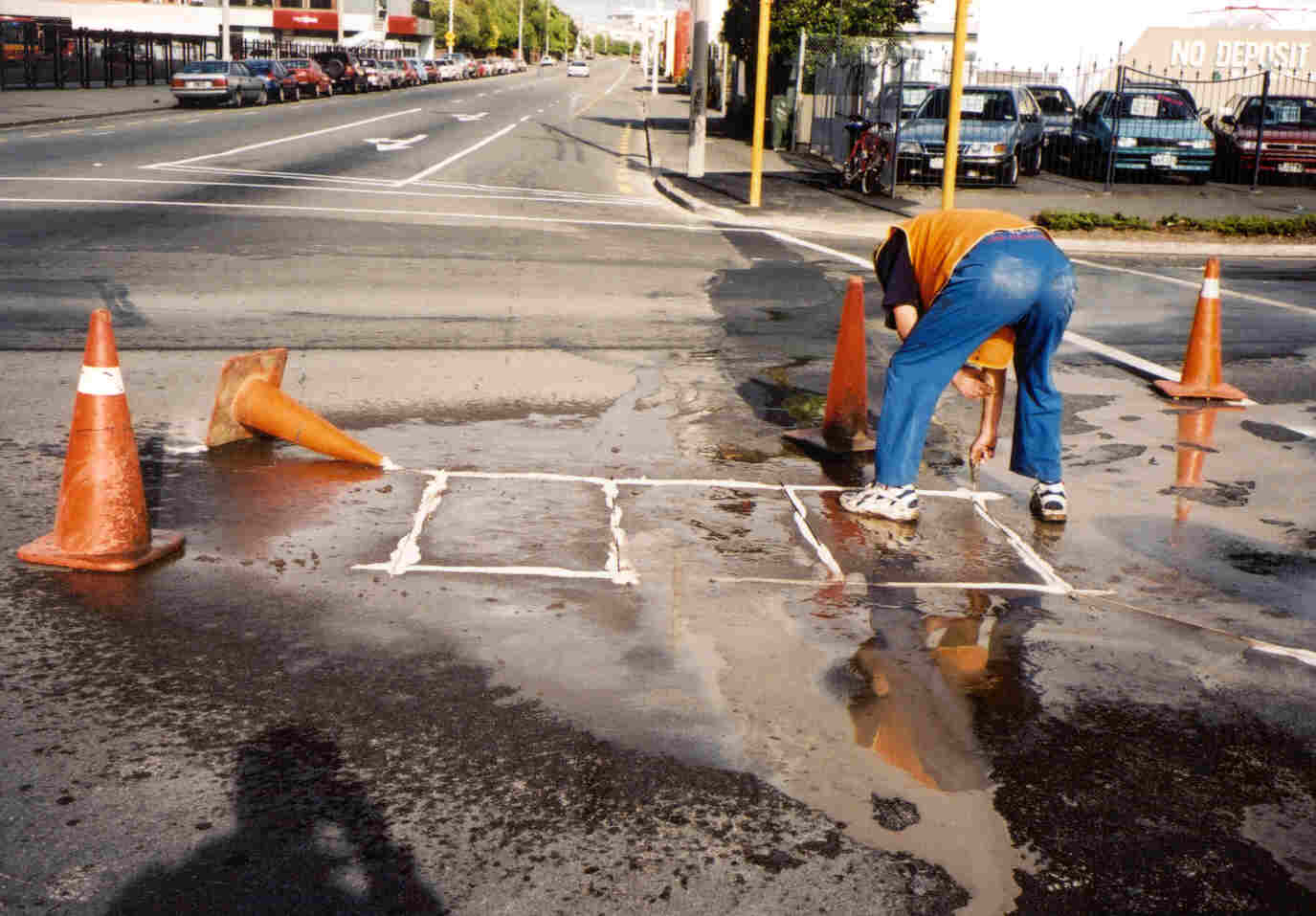Cyclists at wide intersections: all-red time extension on demand
Where presented / published:
1999 VelOZity conference, Adelaide
Conclusions
The analysis has shown that there is a real problem of insufficient intergreen timings for cyclists. The graphs included support the need for a treatment of the problem, as 3 to 4 seconds of clearance time is missing at wide intersections.
The proposed treatment is to provide two detection loops within the intersection that can detect slow cyclists. The procedure that has been developed for the placement and timing of the loops ensures that slow cyclists will call an all-red time extension, whereas red light runners will practically not be able to learn how to call the extension. A major benefit is that cyclists do not need to adjust their behaviour to the new technology, as the system works automatically for them. Cycle groups have been consulted and have expressed their favour towards the proposal.
Another component of the proposal is the need for cycle lanes on the approaches to the intersections. The loop timings and placements are based on the assumption that cyclists stop as early in the yellow period as possible. It will only be safe for cyclists to stop earlier than the other traffic when some space is allocated to them.
The paper and the presentation are available online on this website. Also see a later version of the same research.



